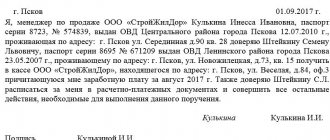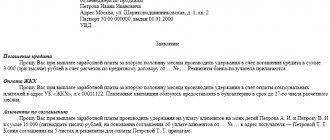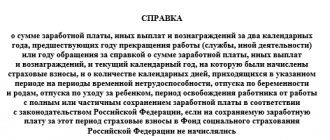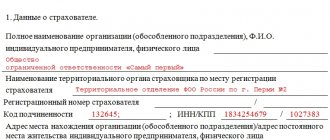If a lawsuit has already been filed against the employer, the wisest advice is not to take any action against the fired employee (either written or oral) without consulting with a lawyer. In such a situation, the main task of the company is to carefully collect evidence that the employee is trying to make a dispute out of nothing, pursuing a completely understandable goal - to get more money from his native enterprise. In order to understand the dispute that has arisen, the court will examine the circumstances under which the employee submitted a resignation letter of his own free will. Next, the servants of Themis will have to understand whether the employee really had the intention to terminate the employment relationship of his own free will and for what reasons he decided to change his place of work. Judges, as a rule, check the date the employee submitted his resignation letter, whether this application was withdrawn, and whether the dismissal procedure prescribed by law was followed (we have provided a far from complete list of circumstances that may be of interest to arbitrators).
What could prompt an employee who has already quit to sue the company he left behind? Most often, a resigned employee claims that pressure was put on him. In addition, references to the fact that during the dismissal the management committed procedural violations (errors in writing the application, delay in issuing the work book, etc.) remain at the top of the “popularity list.” One should not discount the fact that a quit employee wants to get even with the company for something in such a non-trivial way. Let's consider each of the listed options in more detail.
In what cases to apply
A labor dispute occurs when the parties do not reach an agreement.
Common reasons: labor law has been violated, the application of Labor Code norms has been violated, and working conditions have been changed. Let us list the areas of labor conflicts:
- dismissal and employment;
- labor conditions and safety;
- training;
- relations between the team and management;
- violation of social guarantees.
Types of labor disputes:
- individual (Article 381 of the Labor Code of the Russian Federation). They are determined by the employer-employee relationship;
- collective (one side of the conflict is the collective, the trade union).
Labor disputes with “top management”: what is the difficulty?
“Top management” traditionally means senior management: the general director, his deputies, the chief accountant.
You cannot part with such employees without fear of negative consequences for the company. Top managers have access to trade secrets and have certain leverage over the employer. Therefore, when conflicts and labor disputes arise, we recommend involving highly trained experts and lawyers in the process. This way you will be able to avoid serious financial and reputational losses.
Where to submit
The jurisdiction of labor disputes is regulated by Art. 23-32 Code of Civil Procedure of the Russian Federation.
The bulk of conflicts (Article 60 of the Labor Code of the Russian Federation) are considered by labor commissions of enterprises or in territorial inspectorates. But they do not resolve the following issues:
- about reinstatement after dismissal;
- payment of arrears of wages;
- for unreasonable refusal of employment;
- about illegal transfer to another position;
- about changing the article and date of dismissal;
- disciplinary claims;
- disputes regarding confirmation of the existence of an employment relationship;
- on payment of wages for forced absence;
- for violation of the rules for the use of personal data;
- in cases of discrimination of various types.
To protect the listed rights of an employee, send a statement of claim regarding a labor dispute to the district court (clause 1, part 1, article 22 of the Code of Civil Procedure of the Russian Federation). The court is considered as the last resort. The union representative will provide you with support - this is permitted by the procedure.
The following persons apply to the magistrate's court (Article 23 of the Code of Civil Procedure of the Russian Federation):
- to issue a court order in a labor dispute;
- for the purpose of collecting unpaid wages, vacation pay, compensation and other amounts due.
The employer also has the right to file a claim in the district court:
- to recover material damage from the guilty employee;
- if it is registered as an individual entrepreneur or is a religious organization.
A few words about territorial jurisdiction: starting from 2021, an employee has the right to go to court at his place of residence (Part 6.4 of Article 29 of the Code of Civil Procedure of the Russian Federation). This applies to work in branches and representative offices of non-resident organizations. To recover material damage from the guilty employee, the employer files a claim in the district court at the place of residence of the defendant or at the location of the organization, and the plaintiff chooses to appeal the place of execution of the contract or employment contract (Part 9 of Article 29 of the Code of Civil Procedure of the Russian Federation).
Supreme, Arbitration and Magistrate Court
If the plaintiff or defendant is not satisfied with the court's decision on the statement of claim, he can appeal it within the time limits established by law. The appeal procedure is determined by current legislation and cannot be violated. On January 1, 2012, amendments were made to the current Code of Civil Procedure of the Russian Federation to allow parties to a labor dispute to file appeals in courts whose decisions have not entered into legal force. Participants can also file a complaint with the cassation court if the court decision has entered into force.
Rules for filing a complaint:
- An appeal against a decision of the magistrate's court may be filed with the appellate instance (the Supreme Court of a constituent entity of the Russian Federation) through a district court. At the same time, the complaint cannot reflect requirements that were absent in the statement of claim filed with the magistrate court (lower court).
- If you do not agree with the appeal ruling, you can file a complaint with the Presidium of the Supreme Court of the constituent entity of the Russian Federation. The deadline for filing a complaint is 6 months from the date of entry into force of the appeal ruling.
- If the Supreme Court of the subject refuses to satisfy the complaint, the citizen has the right to appeal to the Supreme Court of the Russian Federation. For this, he is given a period of 6 months from the date of the decision on the complaint to the Presidium of the Supreme Court of the constituent entity of the Russian Federation.
In practice, appealing a court decision alone, without a legal background, is extremely difficult. You need to have an idea of the sequence of procedural stages and follow them exactly, draw up all documents correctly and submit them in the manner established by current legislation.
It is good if an experienced lawyer handles the case at all stages prior to going to the Supreme Court. Even knowledge of all the regulations regarding the preparation of documents submitted to this authority may not be enough to win the case. There are a number of subtleties that only a practicing lawyer in individual labor disputes is familiar with. The text of the complaint must be as well-reasoned as possible, supported by facts, only in this case the Supreme Court will accept it for consideration.
Consult with our lawyers on all issues related to resolving labor disputes in Moscow. Our lawyers will help you decide on jurisdiction and collect the necessary evidence, draw up a statement of claim and can accompany the plaintiff in court. If there is a need to appeal a decision of a magistrate or district court, lawyers will also provide competent assistance.
0 0 votes
Article rating
What documents to collect
Prepare evidence to litigate the dispute. They will confirm the facts stated in the application. Verify written explanations with oral explanations in court.
We list the documents to substantiate the plaintiff’s position:
- copies of the plaintiff’s pre-trial appeals to the defendant (with seals, signatures and marks of acceptance for consideration);
- copies of pre-trial written responses;
- evidence of the facts stated in the claim (extracts of documents, copies of contracts, orders, receipts, salary slips, etc.);
- calculation of collected payments and their justification.
IMPORTANT!
Please note: copies of materials are submitted according to the number of parties to the proceeding.
The employer’s materials, which he refuses to provide for the consideration of the claim, are requested by the court after the petition of the plaintiff.
Government duty
In order for the court to consider the case, it is necessary to pay a state fee. To do this, it needs to be calculated correctly . The amount of the state fee depends on the type of claim.
The amount of state duty for cases heard in courts of general jurisdiction by magistrates is determined in Art. 333.19 Tax Code of the Russian Federation; the amount of state duty for cases considered in arbitration courts - in Art. 333.21 Tax Code of the Russian Federation.
If you write a request to defer payment of the state fee , remember that the inability to pay it must be documented. For example, provide an account statement for your company, which shows that you have no money.
If the defendant is a supplier
In practice, situations where the supplier is the defendant are not uncommon. In this case, you need to take into account the following features of the relationship between the supplier and the buyer.
Most often, disputes arise if the supplier:
- did not deliver the goods to the buyer or delivered them untimely;
- transferred the goods in quantities other than those specified in the purchase and sale agreement;
- delivered goods out of stock;
- delivered the goods without accessories and documentation related to it;
- delivered goods of inadequate quality
Evidence of violations on the part of the supplier in these cases will be: an act of acceptance and transfer of goods or a separately drawn up act of defects, waybills, invoices, inventories, specifications, packaging labels, an application for the supply of products.
The acceptance certificate must indicate what specific shortcomings the product has (the assortment is broken, the quantity does not correspond to the contract, etc.).
Please keep in mind that the list of documents may change in each specific case. It depends on how the contract defines the transfer of goods, its range and other parameters.
Procedure for drawing up a statement of claim
In accordance with the requirements of civil procedural legislation, there are general rules for drawing up statements of claim.
The structure of the document consists (conditionally) of 4 parts:
- Introductory.
- Descriptive.
- Motivational.
- Resolute.
The first indicates: name, details of the parties, cost of the claim. It is located in the upper right part of the form.
In the second, the name is written in the center. The essence of the claim and the circumstances are described briefly but completely.
The third contains legal norms that substantiate the legality of the applicant’s claim.
The fourth part consists of a generalization and presentation of requirements to the defendant. Start with the word “please.”
We fill out the application in writing or electronically on the court’s website (Article 131 of the Code of Civil Procedure).
Step-by-step instructions for filing a labor claim
Step 1. Enter the name of the court to which the application was sent.
Step 2. Enter information about the plaintiff. For an individual this is full name, passport details, residential address, for an organization - name, location and legal address, information about the representative - name and address.
Step 3. Provide similar information about the defendant.
Step 4. Point out the non-compliance with labor laws that resulted in a violation of the plaintiff’s rights and formulate demands.
Step 5. You should describe the circumstances of the dispute - the grounds for filing an application. Give facts to prove them.
Step 6. Report the monetary value of the claim and the total amount to be recovered or disputed.
Step 7. In accordance with the law, provide information about the measures you have taken to resolve the dispute out of court.
Step 8: Make a complete list of applications.
Step 9. Enter the date of the application and sign the plaintiff (or his representative).
Include additional points in the application yourself:
- contact details of the plaintiff and his representative (telephone numbers, emails, etc.);
- other information for use in legal proceedings (for example, video and photographic documents, links to the media);
- The plaintiff's motions are submitted if available. These include requests to call witnesses and request evidence held by the defendant.
Mandatory applications are determined by law (Article 132 of the Code of Civil Procedure of the Russian Federation):
- copies of the claim are attached to the number of defendants and third parties;
- receipt of payment of state duty (for the organization);
- representative's power of attorney;
- documents confirming the circumstances and facts of violation of the applicant’s rights;
- pre-trial settlement documents;
- calculation of recovered wages, damages, disputed amounts of remuneration, etc.
If the defendant is a controller
In a situation where a company files a claim against a controlling organization, the list of documents will be different. It depends on what kind of claim is made by the company . In practice, the most common claims and applications are those in which the plaintiff asks:
- recognize as illegal the decisions or actions of state authorities, local self-government and officials of these bodies,
- collect debts from government agencies (for example, collect a penalty if the company did not return tax payments on time).
In addition to the statutory documents, it is necessary to prepare copies of illegal requirements or decisions that were made by the controller in relation to the company. These may be demands to pay a tax, penalty or fine, an order to stop violating the law, a decision to provide a land plot, a requirement to provide documents relating to the economic activities of the company, etc. If you do not have these documents, then you must indicate their number and date of publication in the application. When a company wants to collect debts and losses, for example, from the tax office, it needs to prepare payment orders that confirm the amount of overpaid tax. Correspondence between the inspectorate and the company regarding the settlement of the dispute before trial will also be useful.
If the controlling organization took any illegal actions, then the supporting documents may be copies of protocols or inspection reports, seizure of documents, etc.
Deadlines for filing a claim
In the event of an individual conflict, filing a claim for a labor dispute with the labor commission is possible at any time.
Deadlines for filing a claim in court for an employee:
- for the resolution of an individual dispute - 3 months from the date when he learned or should have learned about the violation of rights;
- for disputes about dismissal - 1 month from the date of delivery of a copy of the order or issuance of the work book;
- on the issue of non-payment (incomplete payment) of wages and other charges - one year from the date of the established deadline for receiving payment.
The employer has the right to file a claim for damages within 12 months from the date of discovery.
The limitation periods are restored in accordance with the Civil Code of the Russian Federation. The circumstances to justify their extension are documented.
What to do before going to court
Try to come to an agreement
In some cases, this is a rational step that will allow you not to spoil the relationship and come to a decision that is beneficial for everyone, since there is no guarantee that you will win in court.
In other cases, attempts at pre-trial settlement are required by law. These include, in particular:
- Amendment or termination of an agreement of the Civil Code of the Russian Federation Article 452. Procedure for amendment and termination of an agreement of the Civil Code of the Russian Federation Article 452. Procedure for amendment and termination of an agreement.
- Change or termination of an agreement on the payment of alimony of the RF IC Article 101. The procedure for concluding, executing, changing, terminating and invalidating an agreement on the payment of alimony.
- Termination of a lease agreement of the Civil Code of the Russian Federation Article 619. Early termination of the agreement at the request of the lessor.
- Disputes with a tour operator Article 10. Features of the sale of a tourism product.
If trying to reach a settlement is required in your case, you must provide evidence that you have tried to do so. Otherwise the claim will not be accepted. Therefore, if you cannot figure out exactly what to do, it is better to contact the defendant with a proposal to enter into a pre-trial agreement.
You can send a claim by registered mail with a list of attachments and a receipt. Or get a document acceptance stamp on your copy, if we are talking about an organization. This will give you the evidence you need to file a claim.
Find out if the statute of limitations has passed
It is imperative to file a claim with the court within the limitation period, because the opposite party’s statement about its expiration will be grounds for dismissal of the claim.
There is a general limitation period - three Civil Codes of the Russian Federation Article 196. The general limitation period is one year. But there are also abbreviated ones. Let’s say that if the pre-emptive right of purchase of the owners of shared ownership is violated, then this can only be reported within three months of the Civil Code of the Russian Federation. Article 250. Pre-emptive right of purchase.
You also need to correctly determine from what day to start counting the statute of limitations for the claim. As a general rule, it begins the moment you learn about a violation of your right and who violated it.
Lada Gorelik
Determine the defendant
It is useless to just go to court: you must definitely complain about someone. So it is necessary to determine who is responsible for the situation in which your rights were violated. You can file a claim against an individual or legal entity, or against a government agency. There may be several defendants.
A claim without a defendant will be left without progress. Therefore, if you do not know some data, you will have to conduct a little investigation. You will need a name or title and address. For example, information about legal entities or entrepreneurs can be obtained from the register on the Federal Tax Service website. And the owner of the apartment whose tenants have flooded you can be easily identified using an extract from the Unified State Register of Real Estate.
Evaluate the claim
We are talking about the amount you plan to recover - the value of the property, alimony payments for the year, and so on. The assessment of the cost of a claim should be approached rationally. For example, if your neighbor flooded you, you cannot enter random numbers. It is necessary to invite a specialist who will assess the damage and attach the results of the examination to the claim.
In the event of a clear discrepancy between the price of the claim and the actual value of the claimed property, it will be determined by the judge when accepting the statement of claim.
Alexey Yuferov
Deputy General Director of Legal
Time limits for consideration of disputes
The following terms of consideration apply in court (Article 154 of the Code of Civil Procedure of the Russian Federation):
- reinstatement at work - 1 month;
- other disputes - 2.
The procedure for considering collective disputes is regulated by Art. 402-404 Labor Code of the Russian Federation.
Valid reasons for missing the deadline for filing a claim are listed in paragraph 5 of the Resolution of the Plenum of the Supreme Court No. 2 of March 17, 2004.
In difficult cases, it takes more than one year to resolve the conflict.
Limitation periods:
- for reinstatement at work - 30 days;
- for repayment of arrears of wages and other financial obligations and requirements - 12 months;
- other labor disputes - 90 days.
Collective and individual dispute
It is believed that a collective labor dispute cannot be resolved in court. In Part 2 of Art. 398 of the Labor Code of the Russian Federation states that such a dispute can be resolved through a number of conciliation procedures, including consideration of the conflict by a conciliation commission or labor arbitration. The possibility of resolving the conflict in court is not indicated here.
However, Article 352 of the Labor Code of the Russian Federation provides a list of ways to protect the rights of an employee, including with the help of the court. In Art. 401 of the Labor Code of the Russian Federation states that in the event of a collective labor dispute, participants are obliged to resolve it by all means permitted by law. This means that after trying to resolve the conflict with the help of a mediator and labor arbitration, you can file a claim in court. This category of labor disputes will be the most complex, and therefore legal assistance will become mandatory: without it, the chances of winning the case are zero. Contact our lawyers to understand how to begin legal protection of your labor rights.
The procedure for an individual labor dispute in court is regulated by current legislation and depends on the specific situation.
Stages of a labor dispute:
- Collecting the necessary documents, searching for witnesses, undergoing examinations and other activities that can prove the legitimacy of the claims.
- Determining jurisdiction, drawing up a statement of claim and sending it to court.
- The court sets a date for the first trial, notifies the parties and participants in the process.
- The trial itself, during which all materials provided by the parties to the trial will be considered and witnesses will be interviewed. The defendant also has the right to present evidence of his innocence and bring witnesses.
- The court makes a decision to satisfy the claim or to refuse.
After the court makes a decision, the labor dispute is considered terminated. A party dissatisfied with a court decision may appeal it in the manner prescribed by law, but the procedure for implementing a court decision must be observed in any case.
The peculiarities of consideration of individual labor disputes in court make the process complex; for most citizens of the country, much will be incomprehensible. To avoid difficulties, it is advisable to hire a lawyer who will be present at the meeting and help protect your labor rights.









